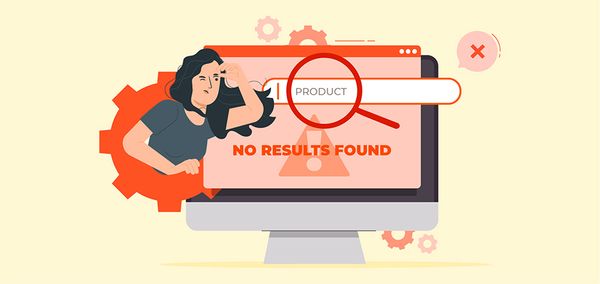Ultimate Guide to Social Media Marketing Strategy for Dropshippers

Social media platforms such as Linkedin, Youtube, Facebook, Twitter, Instagram, and the newest one like Tiktok, are the mega platforms that help dropshippers to engage potential clients. Although, it is crucial to hold a strong grip on social media strategy and the ability to manage engaging content for the marketers so that they can connect with their audience.
The common thing that every entrepreneur wants is for their eCommerce business to earn high sales and fly beyond the sky. Learning social media strategy is the best way to place your feet on the path to success. Being a dropshipper, there is nothing more vital for you than thinking about the robust social media presence to enjoy immense business substantially.
This blog is for all the dropshippers out there to guide them about social media marketing strategies and more.
7 Best Ways to Create a Robust Social Media Strategy
Before you publish anything, think about what you want to gain out of your social media efforts and how you may best achieve those goals. Of course, your company (through your website) is at the heart of your social media strategy. And your strategy is how you connect all of your social media initiatives to their varied objectives. And this is because you have a diverse set of channels to evaluate, each with its own set of strengths, limitations, and possibilities.
To make it easy to start for you, there are five critical pillars that help dropshippers to develop their social media strategy:
- Goals: Specify the consequences of your efforts and how you plan to assess them.
- Target Audiences: Conduct research and create a profile of your ideal consumer.
- Content Mix: Create social media programming around recurrent content archetypes.
- Channels: Determine which of the various social networks you want to devote your time to and what you want to use them for.
- Process: Establish the infrastructure and tools required to carry out your strategy effectively.
This is not a recipe for social media success but rather a framework for getting started. By the final words of this guide, you should be better able to comprehend how all of these factors interact and inform one another, allowing you to make better decisions and adjust your social media strategy over time.
1. Setting Objectives for Your Social Media Marketing Strategy
Everything you write should be related to one of your company goals. To begin, identify your objectives and consider how you will monitor your progress.
Social media marketing necessitates a lot of trial and error; you can't enhance any area of it until you know what signs to look for. You may even utilise these signals (which will vary depending on the channel) to set goals for your social media activities in order to keep motivated and on track.
| Get Started Now to Grow Your Online Business with the Best AliExpress Dropshipping Tool - DSers! |
Here are a few of the objectives you should consider for your social media marketing, which you may include into your approach over time:
- Enhance Brand Awareness: Reach out to more individuals to increase the chances of your brand being viewed by the appropriate people. You may track this using impressions/reach, likes, shares, mentions, or any other metric that indicates a genuine person saw your content (s).
- Create Demand for Your Items: Get individuals interested in your items by providing relevant inspiration or information, which you can measure by website clicks, products added to a shopping cart, or comments/messages from interested consumers.
- Obtain Leads: Convert your viewers into email subscribers, who you may nurture into free sales via social media. Building an audience of interested buyers to retarget with adverts is another option.
- Get Sales: These are paying clients who came as a result of your social media activities and may be assessed in terms of orders or income.
- Drive Offline Traffic: If you own a retail store or conduct events, one of your aims may be to direct visitors to a specific area in person.
- Build Alliances and Networks: Engage in influencer marketing or co-marketing initiatives with influencers or like-minded companies.
- Create Social Proof: Gather positive testimonials or material created by customers/influencers that promotes your business and can potentially be utilised in further marketing initiatives.
- Client Service: A social media presence exposes you to customer queries, complaints, and requests. As a result, one of your objectives will be to give consumers this help or redirect them to another preferred, private route. One method to gauge this is your response time to direct messaging.
Remember these goals as we jump on to the following step: determining who you'll be attempting to contact.
2. Identifying Your Target Demographics
Understanding your target consumer is the first step in marketing on and off social media. Of course, it takes time to build a deep context about your target audience, but there are measures you can do right now that will put you in a stronger position from the outset.
Spend some time investigating your target audience, looking for demographic and psychographic data or observable trends that can assist you in forming a mental image of who is likely to buy from you. After researching, you may combine it to develop an ideal consumer, or "buyer persona," who is likely to purchase from you.
You don't have to include every characteristic, but describe what you can to construct a picture of this individual as it relates to your business.
- Location: Where do your ideal consumers reside? Knowing the country might be helpful, but if you're a local firm or only want to serve a particular area, you need to isolate those locations.
- Age:What is your customer's age range? Keep this as wide as possible unless you are positive that your target consumer is at a specific moment in their life.
- Gender Identity:Which gender do they identify with? Depending on your brand, this may be insignificant or critical.
- Interests: What are their hobbies and passions? These assist with content ideation and audience targeting. (For example, cooking, hip hop dancing, and yoga).
- Career/Industry: In what industry do they work, and what positions have they held? Again, depending on your brand, this may not be as important.
- Income Range: What is this buyer persona's income range? Are they price-sensitive or ready to pay extra for high-quality products?
- Relationship Status: Are they single, in a relationship, or married? For instance, this might be useful if you work in the wedding industry.
- Favourite Websites/Apps: What kinds of websites do they bookmark? Do they use Instagram or Pinterest regularly? Are there any applications they can't live without?
- Purchase Motivation: What would motivate this customer to purchase your product? Do they want to flaunt a status symbol or find time to exercise despite a hectic schedule?
- Purchase Concerns: Why do many people decide not to purchase your product? Are they concerned about the standard?
- Other Information: Anything else not mentioned but worth adding, such as education, stage of life (parents with newborn children), activities they attend, and so on.
The goal of these personas isn't to be entirely correct but rather to define your best guess at the type of individual that would be easiest to convert into a client. In any case, social media marketing is one of the finest methods to discover more about who your consumers are. Moreover, what you learn may be included in your more comprehensive business strategy, such as what items you'll release next. However, after you've identified at least one significant target group, you'll be better positioned to explore the following phase of your social media strategy: what you'll publish.
3. Creating Content for Social Media
Managing a social media channel is similar to owning your own television network.
You may create a content series with fresh "weekly episodes" on each channel (just like our series, Ask Shopify). In addition, you can syndicate your material to other channels (e.g., cross-posting from Snapchat to Instagram). Reruns of fan favourites can fill in for vacant time slots (#ThrowBackThursday), and commercial breaks can be used to advertise your items.
Defining your content mix—the recurrent formats and post types you'll use—makes it easier to conceive up and generate social material while providing rhythm to your posting schedule to provide your audience with diversity and consistency. Otherwise, you'll be scurrying for new content every day.
The content mix you create might include:
- News: Information on what's happening in your business or postings based on what's hot right now.
- Insight: Motivation to utilise your products or follow a particular lifestyle, such as quotes or photographs from worldwide. Share educational stats, lessons, facts, or how-to entries from your blog or YouTube channel.
- Product/promotional Posts: High-quality product photographs of your items in use, demo videos, testimonials, or feature descriptions may all assist you in reaching your ultimate aim of selling your products. After you make them, you may typically run them as advertising.
- Contests: A contest or free download in return for an email address is a terrific method to advertise something other than your items that is valuable to you and your audience.
- Customer/influencer Characteristics: Images or videos of your consumers or the people they follow.
- Community Gatherings: Share gatherings, fundraisers, and learning opportunities, especially if your company is nearby.
- Behind-the-scenes: Explain how your product is manufactured or what you're doing to build your business and provide your audience transparency. Giving your customers a glimpse into the people behind your company may help develop trust and your brand as a founder.
Furthermore, be imaginative in developing a content mix that distinguishes you from your rivals.
4. Prioritising Channels for Your Social Media Strategy
There are several platforms where you may establish a presence for your company, including Facebook, Instagram, Twitter, LinkedIn, and Pinterest. Each channel you select adds to the number of channels you must manage. You must prioritise your first emphasis based on the target demographic you've selected and which channels can support your content archetypes and goals. Understanding the strengths and disadvantages of each channel is the first step.
5. Additional Resources and Advice
Here you will learn the advance tactics of doing the same for the immense profit of your dropshipping business:
Consider the following content marketing channels: You may develop a blog or a YouTube channel as part of your social media plan if you have the time and ability. Content marketing may supplement your social media programming, and social media can be utilised to spread your content marketing as well as source ideas, photographs, and other media.
Focus: Spend some time learning and testing one or two platforms simultaneously. It is preferable to be exceptional on one channel rather than mediocre on others.
Optimise your accounts: Fill up your social profiles with all the information your clients could desire, and attempt to claim the same username on each platform, especially if you want to include a unique tracking link to your website. In addition, have a concise bio that conveys what you do and who you are (this is essentially your digital elevator pitch). Also, wherever possible, provide an avatar and cover photo.
6. Developing a Procedure for Your Social Media Strategy
It's time to build the structure you'll need to manage and arrange your social media calendar now that you've identified your goals, target audience, and how you'll use different channels.
Early in your social media marketing career, it's crucial to be selective about how you spend your time and learn effective strategies like how to go viral on TikTok to maximize your impact and reach a wider audience.
Always consider how you may make better use of your time by recycling or reusing material or dedicating money to paid promotion to obtain a greater return on the time you spend developing content.
7. Bonus Resources and Advice
Other tasks include responding to your audience, community management, running advertisements, and providing the content. Here are the more pro tips that will help you in your campaign:
Make templates: Build design and copy templates based on what works whenever feasible to make it easier to bring out fresh material on an ongoing basis, especially for recurrent content series. For example, you may store your most often used Instagram hashtags so they are always available when you post, or you can use the same filter on your photographs to get a consistent aesthetic.
Keep the Calendar dates at your fingertips: Holidays are an excellent time to be relevant and current with your posts. Pay close attention to what's coming up so you can plan your social media marketing strategy ahead of time. If you want something to refer to, Sprout Social provides a great calendar that includes hashtag holidays.
Customise your posts for each channel: You may share the same post or image across many social networks, but be sure to optimise the content, photos, or videos for the channel you're publishing to.
Make time for proactive communication: Social media is a two-way street, and you must interact with others on and off your material to make it effective. This includes leaving comments on other people's postings, tweeting at individuals in your neighbourhood, and simply being social on these social networks.
Wrapping Up
Fundamentally, you're tracking the results of your social media marketing efforts and experimenting with what works best for your audience.
If still something confuses you and you want to learn more about the dropshipping process and anything associated with an online business, we highly recommend you to visit DSers blogs. You will have the opportunity to become familiar with the professional guidance in every niche related to your online business presence.













 Company
Company
 Why Choose DSers
Why Choose DSers
 Blog
Blog
 Help Center
Help Center




 Live Chat
Live Chat